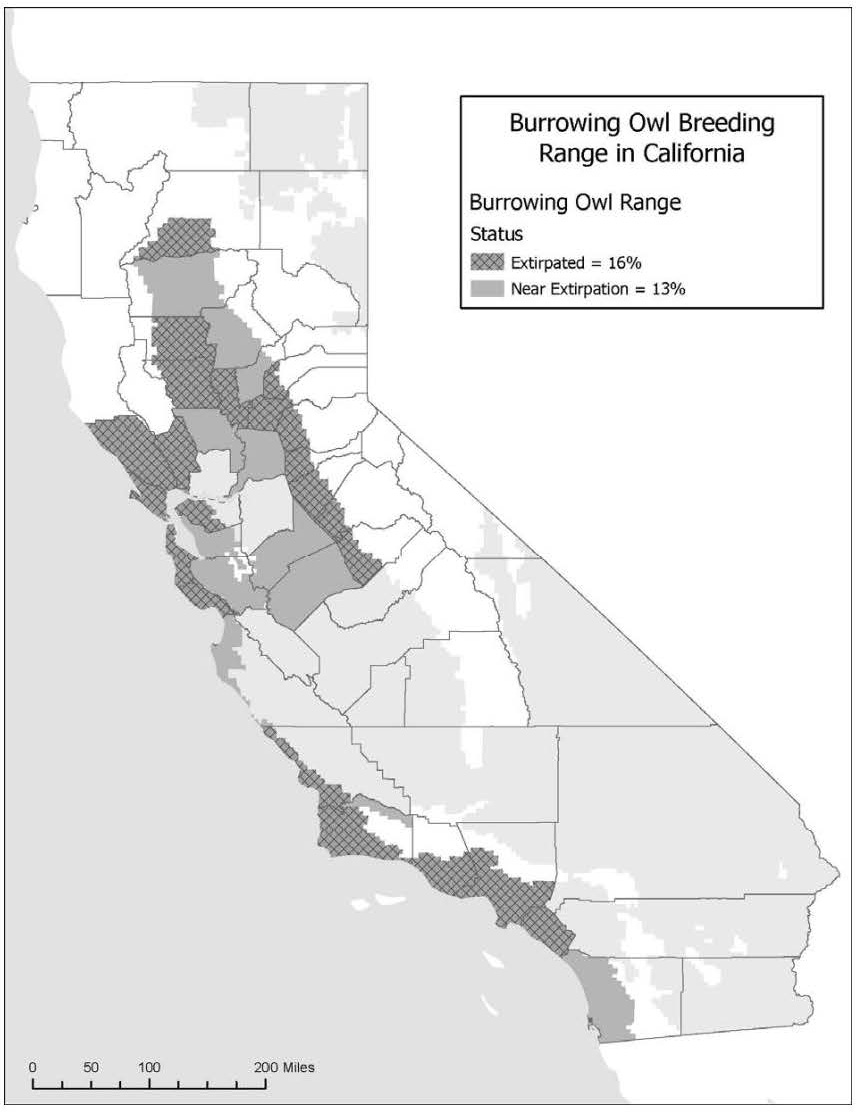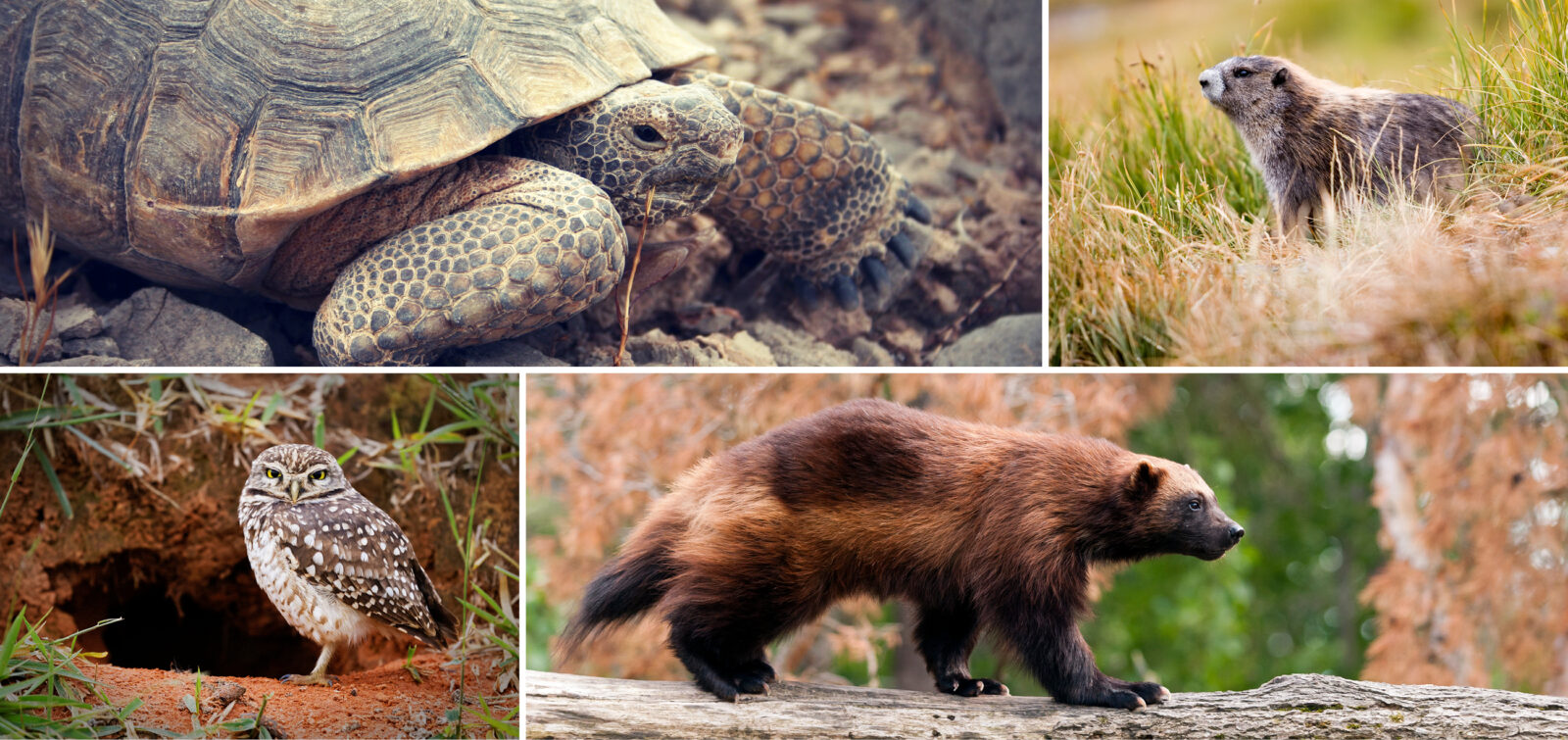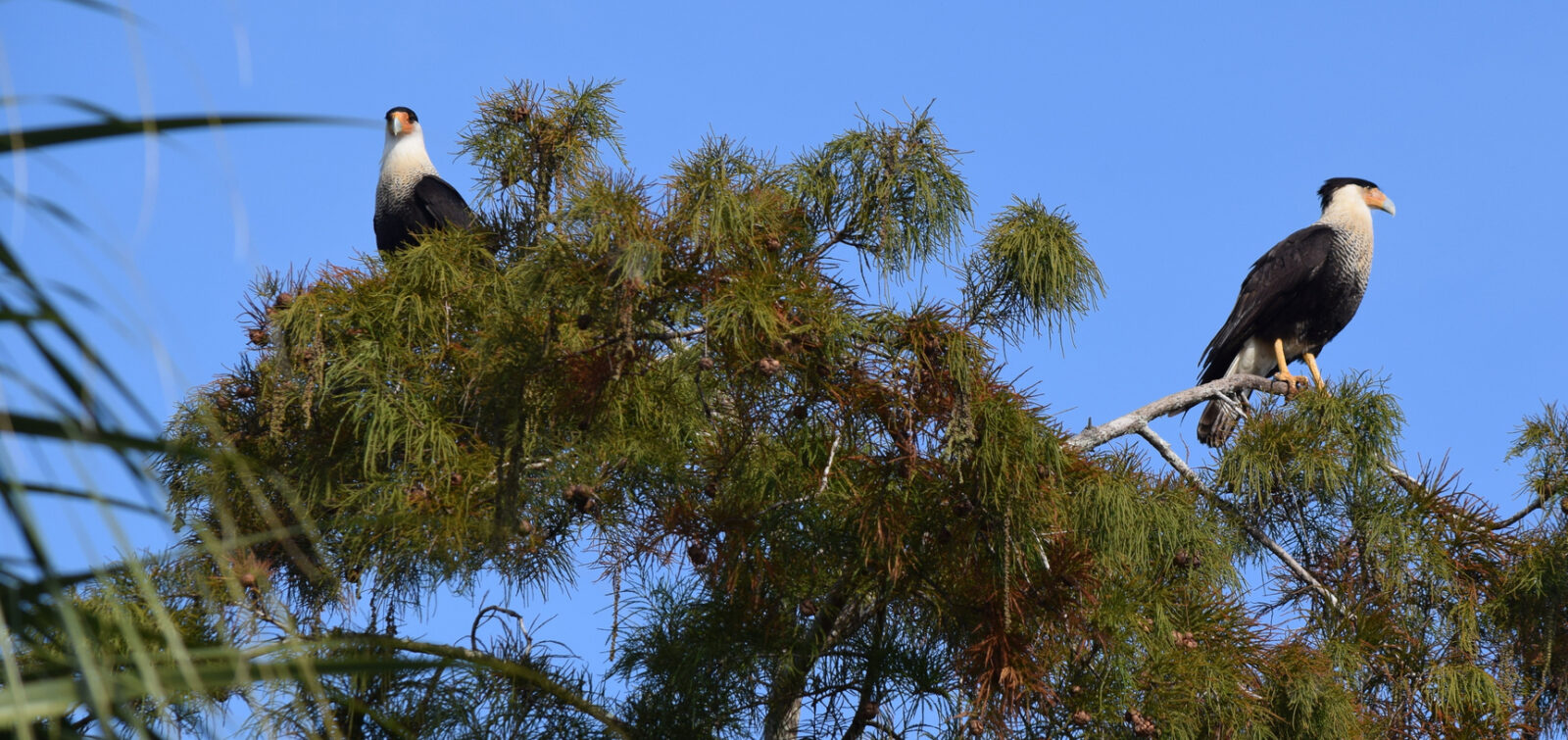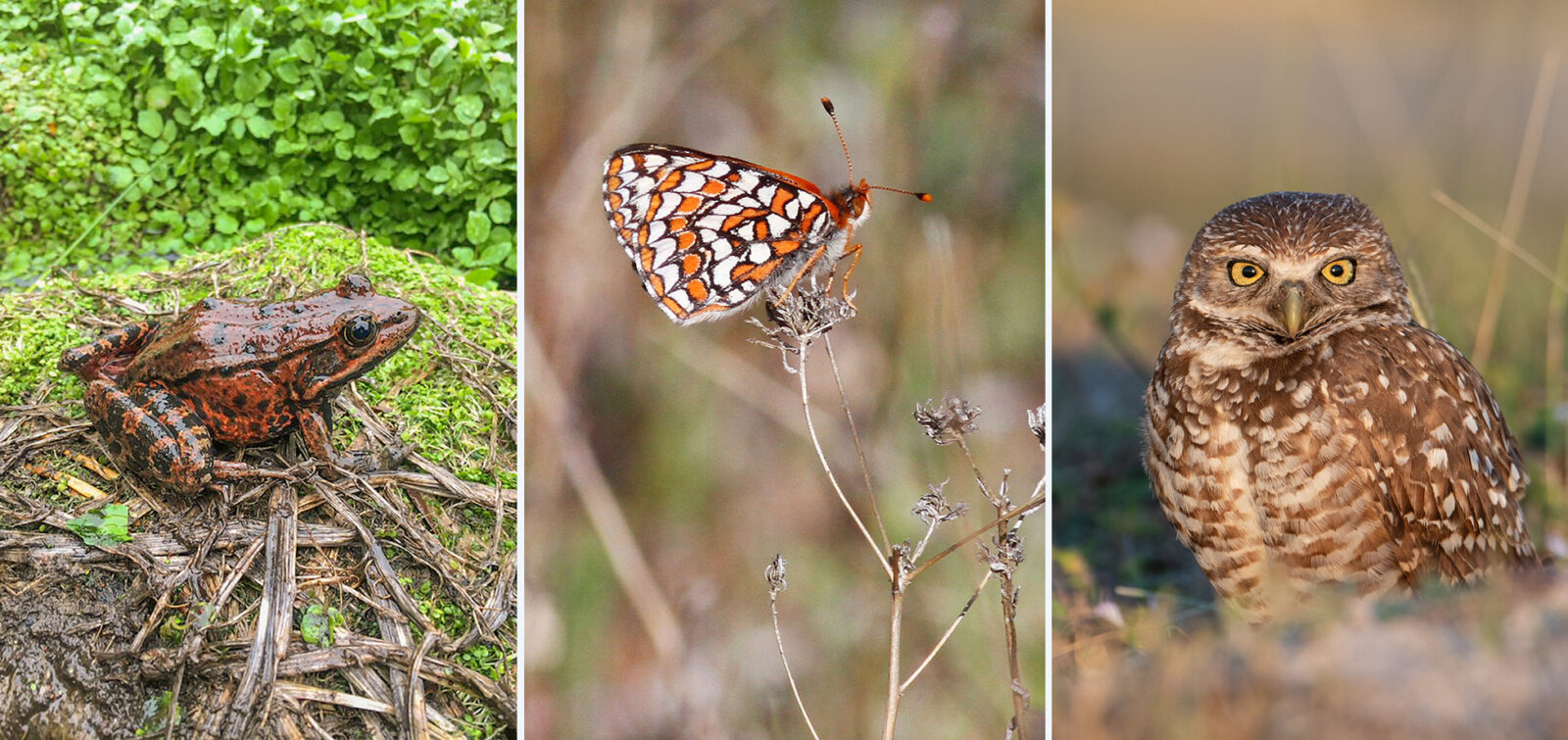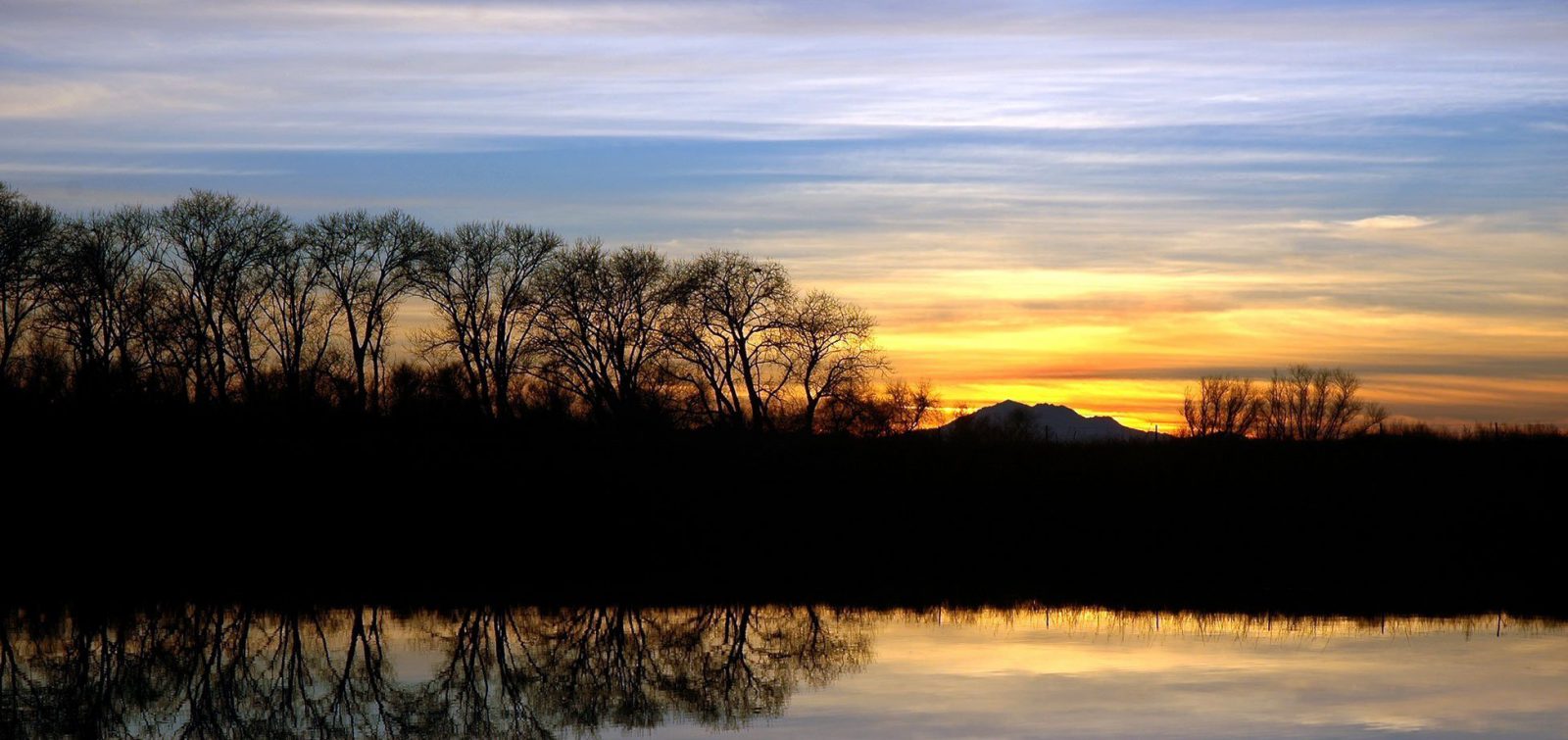Western burrowing owls (Athene cunicularia hypugaea) are charismatic little birds, made even more endearing by their tendency to spend time above ground during daylight hours. They occur in grasslands, agricultural fields, deserts, and other open, well-drained areas with sparse vegetation and occupy underground burrows that they typically take over from other burrowing animals such as ground squirrels (i.e., the small mammals that dig the burrows).
Western burrowing owls have the potential to occur across most of California, and some populations even stay put year-round. Unfortunately, their populations have been declining for years, due largely to development occurring in their habitats and efforts to eliminate ground squirrels.
On March 26, 2024, the California Fish and Game Commission (CFGC) received a petition to list the western burrowing owl as threatened or endangered under the California Endangered Species Act (CESA). On October 10, 2024, the CFGC accepted the petition and designated the western burrowing owl as a candidate species. The species will have full CESA protections until the California Department of Fish and Wildlife (CDFW) decides whether listing is warranted, which will likely occur in late 2025 or early 2026.
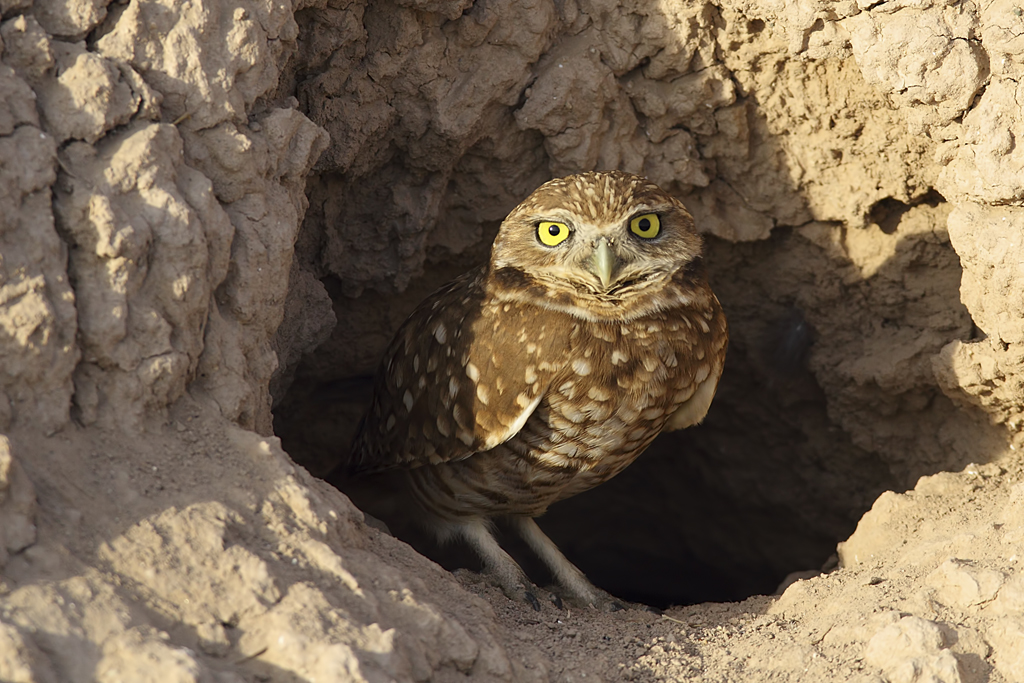
Many projects already mitigate for impacts to western burrowing owls, following guidelines in the Staff Report on Burrowing Owl Mitigation (CDFW 2012). However, now that the western burrowing owl is a candidate species under CESA, “take” (defined as hunting, pursuing, catching, capturing, or killing, or attempting any of those activities) of individuals is prohibited, but could occur while following some of the guidelines recommended in the 2012 report. For example, a common method for mitigating impacts to western burrowing owls has been relocation (moving individuals found on a project site to a different location with suitable habitat), sometimes with artificial burrows in place. However, the listing petition cites recent research suggesting that relocation has not seen much success in maintaining or increasing owl population sizes.
As a result of the western burrowing owl’s candidacy for listing under CESA, projects that are within burrowing owl habitat and involve activities that could result in take will need to either obtain an incidental take permit from CDFW or otherwise avoid impacts that could result in take of western burrowing owls. In addition, focused surveys may be required for projects in areas where western burrowing owls could occur.
ESA’s biologists have extensive experience working with CDFW permits and conducting burrowing owl surveys, and they are highly qualified to guide your project through the proper procedures for burrowing owl avoidance and mitigation under these new protections. For further information regarding the effects of the western burrowing owl’s listing on your project, please reach out to Biological Resources and Land Management practice leader, Barbra Calantas, and find more information about the status of other protected species at the following link.

